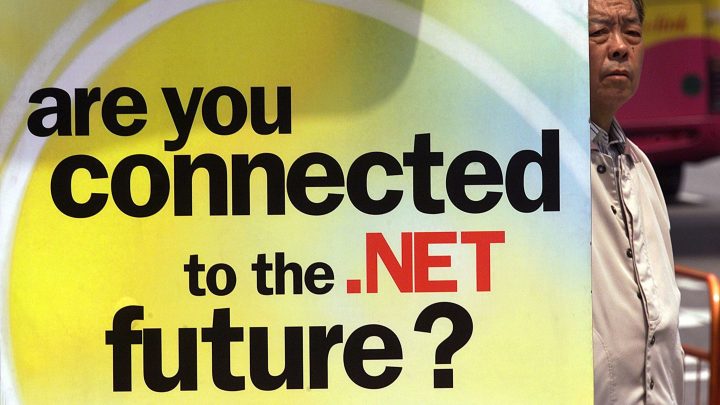
What can the dot-com bubble teach us about the future of AI?
What can the dot-com bubble teach us about the future of AI?

No matter how enthusiastic you might be about artificial intelligence, AI optimism is raging on Wall Street.
Two years ago, the day before ChatGPT made its public debut, the semiconductor company Nvidia was trading at about $160 per share. Today, the AI chip supplier trades at about $860 per share, making it a $2 trillion company.
This AI moment is often compared to the birth of the internet, a transformational technology that could reshape just about every aspect of our lives. The thing is, back in the 1990s, Wall Street was very enthusiastic about the internet too. And lost a ton of money because of that enthusiasm.
What was the most obvious sign that the 1990s dot-com boom was maybe a little bit unsustainable? Well you could have looked at the Nasdaq going up about 500% in just five years.
Or, if you were in New York City on Thanksgiving Day 1999, you could have also just looked up at the inflated four-story-high sock puppet dog.
Former Pets.com CEO Julie Wainwright says she doesn’t know the balloon’s current whereabouts, “but the puppet was pretty awesome and you can still find the commercials.”
Pets.com was what it sounded like: A website that sold pet supplies. Which in 1998, when the startup launched, was a radical idea.
“Every reporter was like, ‘You can’t ship dog food over the internet profitably,'” said Wainwright. “I was like, ‘Of course you can.'”
Pets.com got loads of venture capital investment, spent way more on sock puppet ads than it ever made in revenue, and went public on the Nasdaq in February 2000.
And just nine months later, it collapsed when Wall Street got tired of waiting on the e-commerce revolution.
The general idea was right. The timing? Not so much. That’s a common theme for tech bubbles.
“You always overestimate how fast the change will happen. And you underestimate the magnitude of the change,” said Alkesh Shah, a tech analyst with Bank of America.
Shah has analyzed tech stocks since the 1990s, back when he had to fax clients his reports. He sees lots of similarities between AI and the early days of the dot-com bubble. The very early days.
“So you know when people keep waiting for that dot-com implosion today for AI, we don’t even have the companies yet to implode,” said Shah.
Right now it’s the grizzled veterans of big tech that dominate AI: Google, Meta, Microsoft.
Shah is waiting for AI companies that were born after ChatGPT to arrive. And he says those companies won’t come until there are enough specialized AI servers and data centers and computer chips to support them.
“If you think about how much infrastructure will be necessary for AI, it will probably be even more than what the internet was,” said Shah.
That’s part of the reason Nvidia’s stock has been soaring.
It’s the so-called pick and shovels investment strategy, betting on the infrastructure that underlies a new technology, rather than, say, a shiny new app.
That sounds logical, but it doesn’t always work out. Especially when you look at older tech bubbles, like back when they actually used picks and shovels.
“There seemed to be a railroad bubble every decade or so maybe one before the Civil War, and then one a decade after the Civil War,” said Brad DeLong, an economic historian at the University of California, Berkeley.
19th-century investors rightly sensed that railroads were about to revolutionize the economy, and still lost their shirts.
But just like the telecom companies that laid internet cables in the 1990s, many of which went bankrupt, the failed railroad companies gifted the economy some helpful plumbing.
“In the aftermath of each railroad bubble, we were left with an awful lot of railroads that had been built by investors who had gone bankrupt,” said DeLong.
For her part, former Pets.com CEO Julie Wainwright is experiencing some deja vu.
“Are we in an AI bubble? Yes. Will there be a rush to move the technology forward and companies funded that will fall by the wayside? Absolutely. But the technology’s real,” Wainwright said.
After the internet grew up, Wainwright went on to lead a much more successful e-commerce company, the RealReal.
And now she heads another startup.
“I’m the current CEO and co-founder of Ahara, which is an AI nutrition company,” said Wainwright.
There’s a lot happening in the world. Through it all, Marketplace is here for you.
You rely on Marketplace to break down the world’s events and tell you how it affects you in a fact-based, approachable way. We rely on your financial support to keep making that possible.
Your donation today powers the independent journalism that you rely on. For just $5/month, you can help sustain Marketplace so we can keep reporting on the things that matter to you.

















